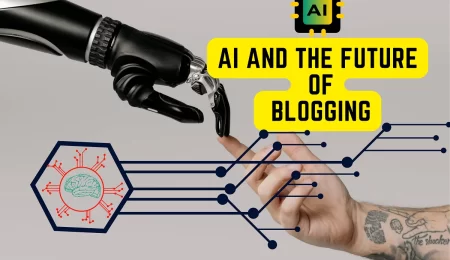Technical Documentation Writing: A Comprehensive Guide for Beginners
If you’re interested in becoming a technical writer, you need to know how to create clear and concise documentation that accurately conveys complex information. Technical documentation writing requires a unique skill set, including the ability to communicate technical information to non-technical readers. In this article, we’ll explore everything you need to know to get started with technical documentation writing.
What is Technical Documentation?
Technical documentation is a form of writing that communicates technical information to a specific audience. This documentation can take various forms, including user manuals, online help systems, API documentation, whitepapers, release notes, and tutorials. The goal of technical documentation is to help users understand how a product works, how to use it, and how to troubleshoot problems.
Technical documentation can include a range of information, such as product features, installation instructions, and troubleshooting procedures. It can be in the form of text, images, graphics, or videos. Technical documentation should be easy to understand, informative, and accurate.
What is Technical Documentation Writing?
Technical documentation is a written document that explains how to use or operate a product or service. It can include user manuals, installation guides, training materials, and more. Technical writers are responsible for creating this documentation in a way that is easy to understand for the target audience.
Understanding the Target Audience
The first step in technical documentation writing is understanding your target audience. Who will be using your product or service, and what is their technical background? This information will help you tailor your writing style and language to suit their needs.
Planning Your Documentation
Before you start writing, it’s essential to plan out your documentation. This includes determining the scope of the documentation, creating an outline, and deciding on the best format for your document.
Creating Clear and Concise Documentation
Once you’ve planned your documentation, it’s time to start writing. Technical documentation should be clear, concise, and easy to understand. Use short sentences and simple language to ensure that your readers can follow along without getting lost.
Including Visual Aids
Visual aids such as diagrams, screenshots, and videos can be incredibly helpful in technical documentation. They can help readers understand complex concepts quickly and easily. Make sure that your visual aids are high quality and easy to read.
Testing Your Documentation
Before you release your documentation to the public, it’s important to test it thoroughly. This includes verifying that all information is accurate and up-to-date, checking for spelling and grammatical errors, and ensuring that the formatting is consistent throughout the document.
The Importance of Technical Documentation
Technical documentation is essential for the success of any product development process. It helps users understand how to use a product and troubleshoot problems, reducing the number of support calls and increasing customer satisfaction. Technical documentation also provides a record of product development, making it easier to maintain and update the product over time.
Moreover, technical documentation can also serve as a marketing tool for a product. Well-written technical documentation can create a positive impression of the product and the company that created it. Technical documentation can also differentiate a product from its competitors by providing in-depth information about features, benefits, and use cases.
Types of Technical Documentation
There are various types of technical documentation, each with its own purpose and audience. Here are some common types of technical documentation:
User Manuals
User manuals are a common form of technical documentation that provides information about how to use a product. User manuals are typically written for non-technical users and provide step-by-step instructions on how to use a product.
Online Help Systems
Online help systems are web-based documentation that provides information about a product’s features and how to use them. Online help systems are typically interactive and provide search capabilities, making it easy for users to find the information they need.
API Documentation
API documentation provides information about how to use an API (Application Programming Interface). API documentation is typically written for developers and provides technical information about the API, such as parameters and response codes.
Whitepapers
Whitepapers are in-depth reports that provide technical information about a product, service, or technology. Whitepapers are typically written for technical audiences and provide detailed information about features, benefits, and use cases.
Release Notes
Release notes provide information about the changes and new features in a product’s latest release. Release notes are typically written for technical audiences and provide a summary of changes and updates, including bug fixes and new features.
Tutorials
Tutorials are step-by-step guides that help users learn how to use a product. Tutorials can be in the form of text, images, or videos and provide a hands-on approach to learning how to use a product.
Tools for Technical Documentation Writing
There are several tools available to help you with technical documentation writing. These include:
Microsoft Word
Microsoft Word is a popular word processing software that many technical writers use to create documentation. It includes features such as spell check, grammar check, and the ability to add images and tables.
Adobe FrameMaker
Adobe FrameMaker is a professional software tool that is specifically designed for technical documentation writing. It includes features such as template-based authoring, automated formatting, and the ability to create responsive HTML5 output.
MadCap Flare
MadCap Flare is another popular tool for technical documentation writing. It includes features such as single-source publishing, responsive design, and the ability to import content from other sources.
Best Practices for Technical Documentation Writing
To create effective technical documentation, it’s important to follow some best practices. These include:
Keep It Simple
Use simple language and short sentences to make your documentation easy to understand for non-technical readers.
Use Active Voice
Use the active voice instead of the passive voice to make your documentation more engaging and easy to read.
Be Consistent
Use consistent formatting, language, and style throughout your documentation to ensure that it is easy to follow.
Use Descriptive Headings
Use descriptive headings to help readers quickly find the information they need.
Include Examples
Include examples and scenarios to help readers understand how to use your product or service in real-life situations.
The Process of Writing Technical Documentation
Writing technical documentation requires a well-defined process. Here are the essential steps in creating effective technical documentation:
Define Your Audience
The first step in writing technical documentation is to define your audience. Understanding your audience’s needs and skill levels is essential to creating effective technical documentation. Determine what information your audience needs to know and what language and terminology they will understand.
Understand Your Product
The next step is to understand your product. You need to have a deep understanding of your product’s features, benefits, and limitations. It’s important to have hands-on experience with the product to provide accurate and comprehensive information.
Organize Your Information
Organize the information you need to include in your technical documentation. Create an outline that includes all the information you need to cover, such as installation instructions, features, and troubleshooting procedures. Organize your information into sections and use headings and subheadings to make it easy to navigate.
Write Clearly and Concisely
When writing technical documentation, it’s essential to use clear and concise language. Avoid using technical jargon and complex sentences. Use simple language and short sentences to make your documentation easy to understand.
Use Visuals and Graphics
Visuals and graphics are essential elements of technical documentation. Use screenshots, diagrams, and illustrations to help users understand the product and its features. Visuals and graphics can also make your documentation more engaging and easier to read.
Edit and Review
Editing and reviewing are essential steps in the technical documentation writing process. Edit your documentation for grammar, punctuation, and spelling errors. Review your documentation for accuracy and completeness. Get feedback from other team members or users to ensure that your documentation is clear and understandable.
Conclusion
Technical documentation writing is a vital skill for anyone who wants to work in the technology industry. By following best practices and using the right tools, you can create documentation that is clear, concise, and easy to understand for your target audience. Remember to test your documentation thoroughly before releasing it to the public, and don’t be afraid to ask for feedback from your users to continuously improve your writing skills.
FAQs
- What is the importance of technical documentation writing?
Technical documentation is crucial for helping users understand how to use or operate a product or service. Clear and concise documentation can save users time and frustration and can also help reduce customer support calls.
- What skills are required for technical documentation writing?
Technical documentation writing requires strong writing skills, attention to detail, and the ability to communicate complex technical information to non-technical readers.
- What are some common mistakes to avoid in technical documentation writing?
Some common mistakes to avoid in technical documentation writing include using jargon or technical terms that the target audience may not understand, using overly complicated language, and failing to test the documentation thoroughly.
- What are some best practices for creating effective technical documentation?
Some best practices for creating effective technical documentation include keeping the language simple and concise, using active voice, being consistent in formatting and style, using descriptive headings, and including examples and scenarios.
- What are some tools that can be used for technical documentation writing?
Tools that can be used for technical documentation writing include Microsoft Word, Adobe FrameMaker, and MadCap Flare, among others. These tools can help with formatting, automation, and organization of documentation.
Photo by Adrian Agpasa




Leave a Comment